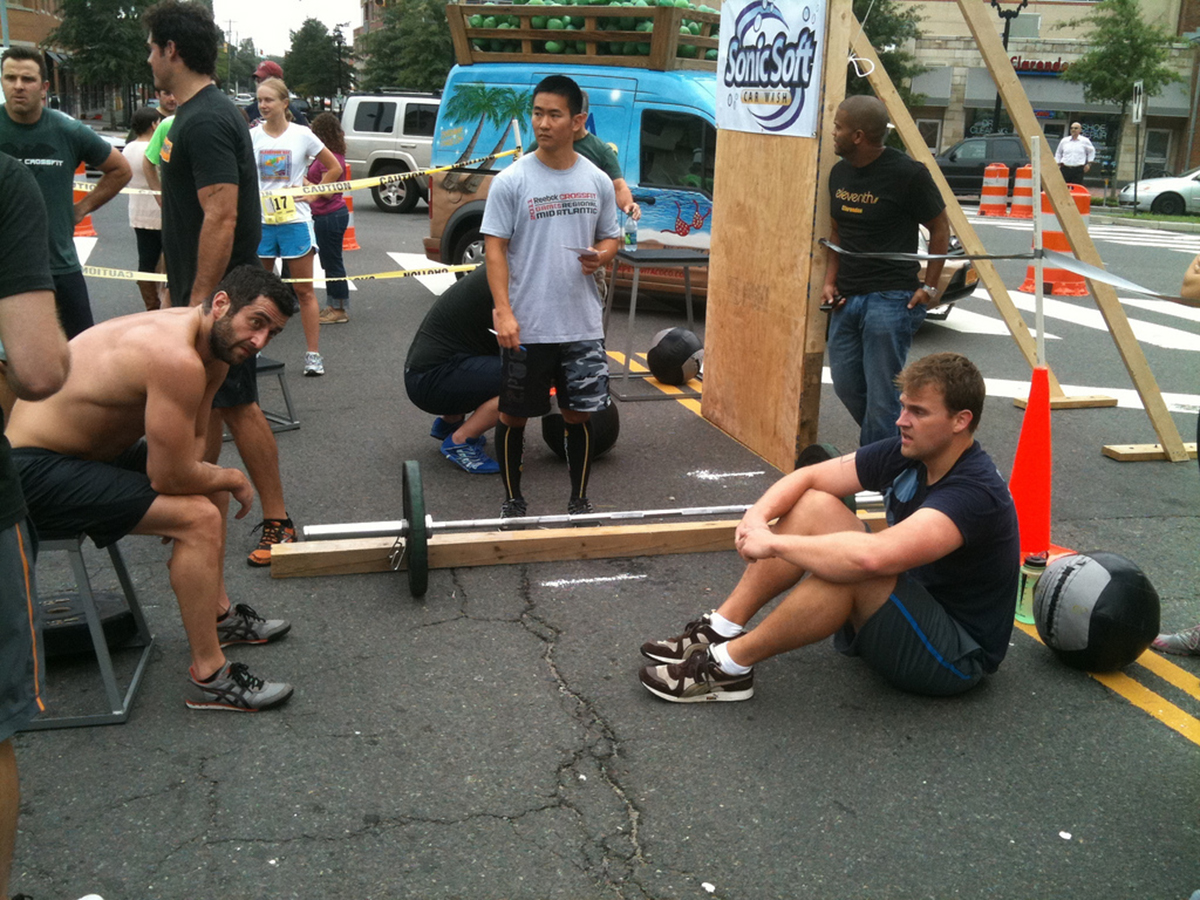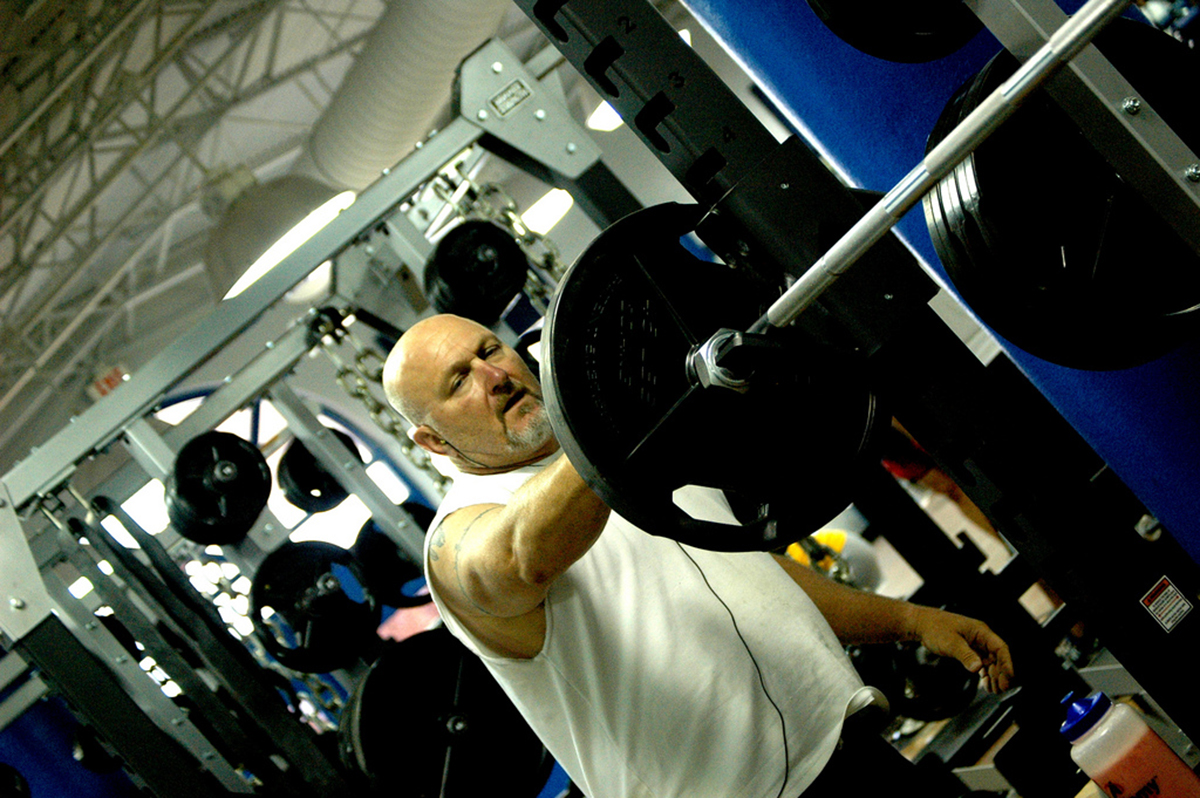Over the last few years, there's been a backlash against "steady state" cardio and the elliptical crosstrainer's tyrannous reign over American fitness. Trouble is, that's often been ego-driven, with hard sessions becoming a way for trainees to feel that they're above the common herd, while for trainers, they're a gift: people don't even look at results any more. As long as you're stumbling out of the gym sweat-soaked, light-headed and catabolic, you're happy, right? Trouble is, anyone can smoke you — not everyone can get you closer to your goals. For that, you need a sensible program that includes high-intensity training, dull, difficult postural and structural drills, pounding away at the basics and maybe even the occasional spell on the elliptical.

Go Hard Or Go Home Needs To Go Home
What's happened is simply that one unquestionable orthodoxy has been replaced by another. Where once, gyms pushed cardio in the "fat-burning zone" and everybody speed walked about eating whole grains right off the stalk, now even mentioning carbs will get you a patronising run-down of whichever eccentric diet the speaker has adopted in order to fuel hour-long sessions of kipping pull-ups and weighted-vest box jumps.
Something great really has happened. People have stepped away from the machines and gone outside. They're looking at fitness in a more holistic way — a fit person should be able to do things. That's grasped more now than it was ten or twenty years ago, and the contribution that Crossfit and various primal and caveman gyms and exercise systems have made to that shouldn't be underrated. People who aren't XXXXXL-wearing gym rats aren't ashamed to want to gain a bit of muscle.
That's Good
But there's more going on here than some kind of fitness revolution, where everyone deserts the soulless corporate gym and head out to the pull-up bar, singing "We Built This City". What kept people in those gyms in the first place was the ideas they had. And now we're all supposed to have different ideas — but they're just as dogmatic. That's kind of the problem.
Now, gym classes and boot camps in local parks offer sessions that focus on a mix of cardio and load-bearing exercises, often for an hour or so at a time. That can mean calisthenics and kettle bells, shuttle runs and sprints, partner drills, boxing drills and more, sometimes in the same session.
There's an extra issue with hard effort, boot-camp style sessions though.
See Also: Stay At Home With This Great Indoor Workout
If you spend an hour on the treadmill, the problems it will cause you are chronic. Watch a class full of people who haven't had a single second of individual instruction do kettle bell clean and presses and it's easy to see how this new fitness trend is well set up to cause acute injury. You're not going to get gradually fatter. You're going to tear something.
Work Out, Don't Burn Out
Hard effort programs are great — for some people, some of the time. So are Thera-Bands, hot yoga, running on the spot and high-rep pull-ups. So are treadmills and elliptical cross trainers. But not the same people and not all in the same session.
Once, the belief was that you simply did the fitness stuff and you'd get fitter. The logic began to sound a little stilted - sure, you're not getting any better, but if you didn't do this you'd be getting worse!

Now, the more exhausted you are coming away form a class, the better the class was. Trainers know that they can sell a class as a "blast" or a "pump" or a "burn" and people will turn up looking to be blaster, pumped and burned — to give a very high effort and in return, to get very tired.
OK, So Far So Good
Trouble is, that doesn't deliver life-changing fitness results for most people. It just makes for injuries and burnout.
To do something for time or high reps as a conditioning tool, it really wants to be a movement that's well below your strength threshold and well below your skill threshold.
For instance, boxers sometimes use a training method called a "punch-out" drill. The objective is to throw as many punches as possible to the pads or heavy bag in a short time. That works great — in a group of people who can throw punches in their sleep. But for someone who hasn't thrown a punch for twenty years before that day's HardCoreMax BootCamp, it's a great way to score a broken wrist. Experienced weightlifters can do thrusters for time. Try it the first time you pick up weights and you'll wind up with the barbell on your head, as your coordination goes or your strength unexpectedly gives out.
Doing complex training movements that are close to your limits for maximum time, reps or, worst of all, speed, is a fantastic way to get hurt.
Yet it's also a fantastic way to make a workout feel challenging.
"Go hard or go home" is a great slogan — it sounds all tough and no-nonsense. I'm hard, it seems to say: you're a softy, so go home. "Go appropriately to your situation and your goals" is an awful slogan. It's way too long and it's just no fun. You don't get to show off or look down on anyone. It puts everyone in the same boat. It does happen to be true, though.
See Also: Improving Core Strength With Bodyweight Moves
If you want a great fitness outcome, take a long hard look at where you are. Look for a trainer who has a documented record of success with people who started out where you are, and talk to her about your situation and goals. Don't let anyone pressure you, and don't let people suggest that by choosing one fitness modality over another, you're betraying weakness or making a lesser choice. And take the go-hard boot-camp bombast with a big pinch of salt.
- Photo courtesy of Drewgstephens via Flickr: www.flickr.com/photos/dinomite/6178233760
- Photo courtesy of Sherri Abendroth via Flickr: farm9.staticflickr.com/8145/7611471800_14a47836cf_b.jpg


Your thoughts on this